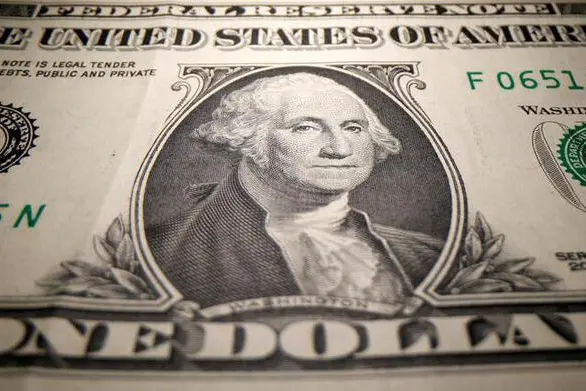PHOTO
SINGAPORE/LONDON - The dollar index was steady on Friday, a rare spot of calm in volatile global markets ahead of key U.S. payrolls data later in the day, while the yen weakened after the Bank of Japan kept stimulus settings steady.
The dollar jumped as much as 0.63% against the yen , a knee-jerk move after the BOJ kept policy unchanged in Governor Haruhiko Kuroda's last policy meeting before he steps down in April.
"The dollar/yen's "sharp rebound post-decision was a reflection of the bets markets were putting up hoping for a parting surprise from outgoing Governor Kuroda," said analysts at OCBC.
While the "no surprises" decision was expected by most market watchers, many see the days of the BOJ's bond yield curve control (YCC) as numbered, which led to some pricing in a slim chance of a policy tweak at Kuroda's last policy meeting.
The dollar later gave back some of those moves and the dollar was last up 0.4% at 136.65 yen.
There was plenty happening elsewhere in markets, with European and Asian banking stocks tumbling a day after U.S. bank shares plunged as tech-industry lender SVB Financial Group launched a share sale to shore up its balance sheet due to declining deposits from startups struggling for funding. Some investors feared it could point to broader stress in the U.S. banking system.
That also drove sharp moves in U.S. and European bond markets.
"This and today's U.S. February jobs release are creating dangerous cross-currents for FX markets," said Chris Turner, regional head of research for UK and Central and Eastern Europe at ING.
"The first impact seems quite clear – the news has encouraged deleveraging of open FX positions. Hence the two darlings among the FX investment community this year – the Mexican peso and the Hungarian forint – have led losses in the EMFX space at -2.2% and -0.8% respectively."
"The G10 FX performance has been more mixed, but makes some sense too. Modest losses have been seen among the higher-beta currencies, such as the Canadian dollar and Norwegian krone. The outperformer has been the Swiss franc against the dollar," Turner added.
The dollar dipped to a two-week low against the Swiss franc, and was last down 0.2% at 0.9302, after falling 0.9% on Wednesday.
The U.S. dollar also hit a five-month high on the Canadian dollar of C$1.386, and rose 0.7% on the Norwegian crown also to a five month high
The euro and sterling were both up a touch at $1.0595 and $1.19425 respectively, leaving the dollar index flat at 105.23.
The focus now turns to the closely watched nonfarm payrolls report later on Friday, the next major data point that could offer clues on the Fed's next steps for monetary policy.
What impact the turmoil in the banking sector will have on the Fed remains to be seen.
According to a Reuters survey of economists, nonfarm payrolls likely increased by 205,000 jobs in February after surging by 517,000 in January.
Thursday data showed that the number of Americans filing new claims for unemployment benefits had increased by the most in five months last week. That caused the greenback to pause its sharp rally as traders unwound some bets that U.S. rates would rise much higher than previously expected.
Futures pricing now implies a roughly 52% chance that the Fed will raise rates by 50 basis points this month, compared with 70% before the data release according to CME's Fedwatch tool.
Earlier in the week, the greenback surged after Fed Chair Jerome Powell struck a more hawkish tone than markets had expected at his semi-annual testimony before the Senate Banking Committee.
(Reporting by Rae Wee and Alun John; Editing by Bradley Perrett and Kim Coghill)





















